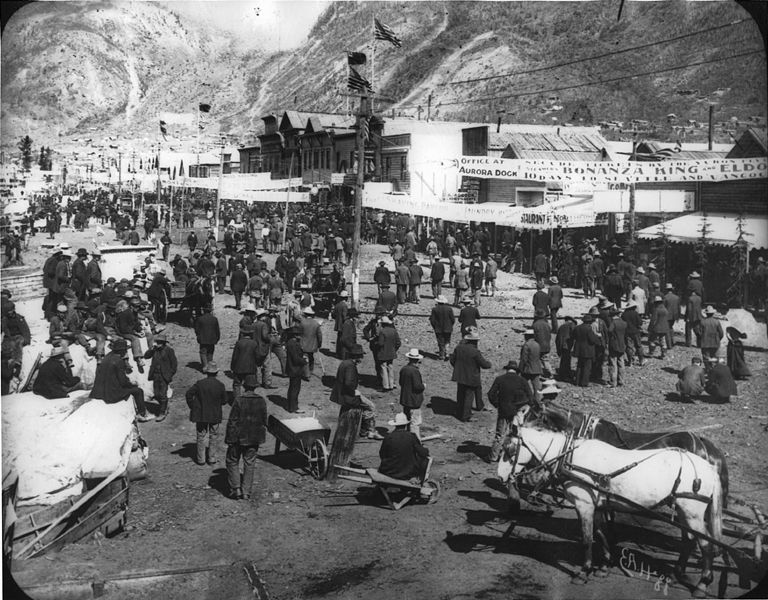Why was #Yukon Gold Rush town #DawsonCity named after a #NovaScotian? Read this thread to find out!
#nspoli #cbpoli #novascotia @karla_macf_pc @TimHoustonNS #nshistory @SeanFraserMP @PictouAdvocate @TOWNofPICTOU @GSC_CGC

#nspoli #cbpoli #novascotia @karla_macf_pc @TimHoustonNS #nshistory @SeanFraserMP @PictouAdvocate @TOWNofPICTOU @GSC_CGC


#Pictou’s George Mercer Dawson led the expedition that surveyed the intern'l boundary between Alaska and Yukon. The expedition left Ottawa on April 22, 1887 and traveled into the Yukon’s wild, remote country to record its geography, geology, botany, native languages and legends. 

Even though Dawson endured frail health most of his life – he had Pott’s disease, aka tuberculosis of the spine - he carried out some of the most strenuous surveys attempted in #Canada and did more than anyone else to create a modern map of the Canadian West.
#nspoli #cbpoli
#nspoli #cbpoli

He never set foot in #DawsonCity but he predicted a major #gold discovery would happen in the Yukon River Basin, almost a decade before the 1896 gold discovery that triggered the #Klondike Gold Rush of 1898.
#nspoli #cbpoli #novascotia
#nspoli #cbpoli #novascotia

To acknowledge his achievements, #DawsonCity, incorporated on January 9, 1902, was named after him.
Dawson was director of the @GSC_CGC (Geological Survey of Canada) and President of the Royal Society of #Canada.
#nspoli #cbpoli #novascotia
Dawson was director of the @GSC_CGC (Geological Survey of Canada) and President of the Royal Society of #Canada.
#nspoli #cbpoli #novascotia

He was keenly interested in the languages and cultures of the #FirstNations peoples he met in his travels and became known as “The Father of Canadian Anthropology,” the study of the development of human societies and cultures.
#nspoli #cbpoli #novascotia
#nspoli #cbpoli #novascotia

George was the son of John William Dawson who was born in Pictou in 1820. The elder Dawson became Canada’s 1st scientist with a worldwide reputation when he discovered the fossilized remains of Hylonomus lyelli, the oldest known reptile in the world, in the Joggins fossil cliffs. 

(Hylonomus lyelli was named Nova Scotia's official fossil in 2002). William, as he was called, was Nova Scotia's first superintendent of education and Principal of McGill University.
#nspoli #cbpoli #novascotia
#nspoli #cbpoli #novascotia

#NovaScotia had 3 historical gold rushes in the 1800s and early 1900s. It's having a 4th now. Hundreds of well-paying jobs have been created in rural areas. With four #gold mines currently in the permitting process, many more will be created in the next few years.
#nspoli #cbpoli

#nspoli #cbpoli


• • •
Missing some Tweet in this thread? You can try to
force a refresh



























